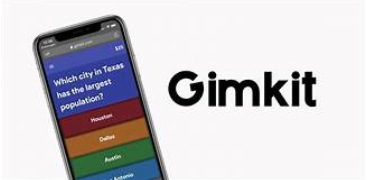
27 Oct Need an easier way to personalize learning & differentiate lessons? Try these 4 tools.
Kalysta title: 4 tools that make it easier to personalize learning & differentiate lessons
Social media caption:
Technology platforms that differentiate and personalize your lesson plans
 This article is written by Truth for Teachers writer Tia Butts.
This article is written by Truth for Teachers writer Tia Butts.
In the fall, it will be best to return with a mindset that focuses on building relationships and finding different ways to support students. Since many of the students have been out of the classroom for over a year (yikes!) it will be so important to offer an appropriate balance between structured lesson plans and activities that help you build rapport with students. One way to achieve this is to use technology games and platforms that can be used for both learning and relationship-building.
Even before the pandemic, I’ve always been in pursuit of learning about ways to engage students without long periods of lecture. Now, after a long period of virtual teaching, I am even more passionate about exploring this. I’m finding that the main way to keep students fully engaged is to not only make the lesson itself interesting but to also use some type of online technological platform that helps display student performance in live time. It helps with accountability and also keeps the students stimulated. Here are my top five favorite online teaching platforms:

Nearpod
Many school districts have an account with Nearpod, which is an interactive teaching platform that allows teachers to deliver lessons for K-12 students in a varied and engaging way. With Nearpod, your lessons can range from an interactive field trip to the classic whiteboard drawing to a basic multiple-choice quiz or practice activity.
What makes Nearpod unique is that the teacher has the power to pace their lessons to their preference. For example, if you teach a “live” lesson, you can control what the students see on their screen and how long you stay on that particular question/slide. Videos and other materials can be embedded for either the class to see at the same time or at their own pace. And to top it all off, Nearpod still offers many professional built-in lessons on a range of subjects in the case that you don’t want to start from scratch.
Plus for Personalized/Blended Learning: You could essentially set up a small lesson on Nearpod for students and let them work at their preferred pace. The fact that you can use a variety of different materials (videos, drawing, slides, PDFs, interactive field trips, gamified questions) is what makes Nearpod such a well-rounded learning tool. Try using Nearpod to do getting-to-know-you activities for students that may still be a little shy and aren’t ready to do a lot of talking on the first day back to school. For students that don’t want to participate verbally, you could read their answers out loud (with their permission) to acknowledge what thoughts/information they have to add to the lesson.

Remind
Imagine if you could contact all of the parents of your students at one time and tell them about your upcoming project for class? I hear your response right now….Can’t I send a mass email and do just that? Well imagine if you can send that message but it goes to your parents’ text messages and they can’t see your personal phone number? Well, that’s how Remind works. Remind is a text-messaging based app that allows you to send and receive messages by phone without revealing your personal cell phone number. The best part about it is that you can send private or mass messages and your parents or students can respond to you privately.
One awesome thing about Remind is that you can access it from your laptop to send longer messages. For example, I have students who message me on Remind to get detailed help on assignments. If they ask me something that might be a longer message, I can get on my laptop and type it faster. They will see it as a text message, but you have the ability to type from any device (tablet, laptop, or smartphone).
You can also send different types of attachments through Remind as mass messages. Just keep in mind that mass messages have a character limit but personal messages do not.
Plus for Personalized/Blended Learning: Remind is so valuable because it can be used as a community tool that reaches all students/parents at the same time but it can still be used for confidential, one-on-one communication. Although I would not recommend requiring a student to sign up for Remind, you could always give incentives for using Remind and use it in a way that makes it enjoyable for the student.
If you use Remind, be consistent in using it so that students can understand its value. You could send short, motivational texts to students weekly or helpful academic tips on a regular basis.
Make a separate account for parents so that you can update them on important events and assignments and also get in contact with them individually if you need to. If you do newsletters, cut back on paper by making them electronically and sending them out through Remind. This is also a great way to ensure that parents get important documentation that otherwise might not get to them if printed out.
Also, don’t forget that you can manually invite parents (so you don’t have to depend on the student to ask their parent to sign up). At the beginning of the school year, I send all parents an invite by entering their contact information in the system. I allow students to sign up while in class and keep my codes on the board.

Gimkit
I decided not to discuss Kahoot for now because so many of us are familiar with it. However, there is another interactive “gaming” type of learning tool out there that is like Kahoot on steroids, and it’s called Gimkit. Gimkit was created by a young man who had grown bored of Kahoot and wanted to make a learning game that worked in a different way.
I’m not sure exactly how long Gimkit has been around, but I started using it in 2019 when I was teaching in Georgia. I had a student that requested that I give it a try when we were reviewing literary elements and figurative language. The one caveat that must be mentioned before I get you all excited is that unlike Kahoot, Gimkit is not free. Right now, in order to use it, you need to subscribe to a monthly subscription that costs between $7 – $8 a month. You do get a free trial to test it out to see if you like it. After I did the trial, my students were so in love with Gimkit that I had to keep it around.
What makes Gimkit different from Kahoot is that students essentially work independently and at their own pace. Oh, and the kicker: it’s a money game. So, you start students off with a certain amount of money. As students start the game, they will see multiple-choice questions that are presented in a stream. As they answer the questions correctly, they get money; however, when they get the answer incorrect, they lose money. As the student accumulates money, they can then spend that money in different ways. They can buy “multipliers” which will ultimately increase the amount of money they make for each correct answer. They can also buy power-ups which can help them “freeze” a classmate’s screen (so they can’t answer questions for a few seconds), decrease a classmate’s money, or even change the music that is playing during the game. And that only scratches the surface.
Since I’ve purchased the subscription, I’ve seen Gimkit constantly evolving and I love the personalized messages that I get from the creator, “Josh from Gimkit.” They often have different game themes, such as Humans Vs. Zombies during Halloween, and they even did an Among Us version of Gimkit based on the popular video game. Each game has a leaderboard that can be shown on the teacher’s screen to show student progress.
Gimkit is especially helpful if you are focused on memorization and drilling often needed for vocabulary words.
Plus for Personalized/Blended Learning: Gimit gives students the chance to multitask in a way that no learning tool does right now. While Kahoot still has its place (and I still play it with my students regularly), many students need a different type of stimulation that goes beyond selecting an answer quicker than the rest of the class. Gimkit takes a much more personalized – but still gaming – approach. While the student answers the stream of questions at their own pace, they still have a menu that they need to use in order to get the power-ups, multipliers, and freeze/blur options. It’s all a strategy game that determines how they can manage their time between answering questions and maximing their money and resources in the game.
Students cannot win the game if they simply answer the questions correctly but don’t use the power-ups, and if the rules of the game are not explained appropriately, some students may shut down and refuse to play. Unlike Kahoot, Gimkit is a layered game that has many working parts.
I recommend that teachers using Gimit play it a few times with their students to understand how it works or have a student that is good at the game walk around the classroom and help others. I just love the idea of students having a choice of what we can play when we gamify our lessons.

Live Docs/Slides
Using the live features on Google Slides and Docs is so much more helpful and convenient in the virtual classroom. Most educators are very familiar with Google Docs and Slides, but one particular feature that I’ve been having a lot of fun with is the live feature. When I say live feature, I’m talking about making a document or slide editable so that everyone can make changes at the same time.
This could be used for actual work assignments or for rapport-building exercises for students. I recently used them for both. When we started working on our research paper, I had students go into a live document and try to build a claim for their argument. While they worked on that, my co-teacher and I looked at their claims and gave them feedback. As we gave feedback, I was pleasantly surprised at how many of my normally reluctant students dived in because they wanted to get instant feedback. I think it was much more productive than having them submit a claim as an assignment that would ultimately take me several days to grade and give feedback on.
I’m also planning to use Live Google Slides to make a virtual yearbook for my students from now on. I’ve always been a teacher that enjoyed having pictures of my students even when we were all in the classroom together. After the pandemic, I promised myself I would always make more of an effort to get pictures of my students and make an electronic yearbook of my classes.
Last school year, I used my AP students to make my first attempt at a class yearbook. When I asked students how they would suggest that we put together our yearbook, I had a few students suggest that we set up a live editable Google Slide that they could go in and submit pictures to as well as adjust the layout on their own. I thought this was such a cool idea! Again, this gave students the chance to personalize their work. They picked their own pictures and made adjustments to the slides in the way they felt most comfortable with.
Plus for Personalized/Blended Learning: Live documents can be used for many things as long as you and the student are comfortable sharing what is being typed in the document. You could also use it for quick fun questions. For example, you could ask students something simple like “Who is the funniest member of your family, and why?” Make a box beside their response and you could comment on their response in live time or have other students comment back to them in live time.
Live documents also are also great for formative assignments similar to the claim assignment I was talking about earlier. A difficult concept to a student may become easier to digest or understand when they are able to see what their peers are thinking about.
The post Need an easier way to personalize learning & differentiate lessons? Try these 4 tools. appeared first on Truth For Teachers.
Kalysta title: 4 tools that make it easier to personalize learning & differentiate lessons Social media caption: Technology platforms that differentiate and personalize your lesson plans This article is written by Truth for Teachers writer Tia Butts. In the fall, it will be best to return with a mindset that focuses on building relationships and … Continued
The post Need an easier way to personalize learning & differentiate lessons? Try these 4 tools. appeared first on Truth For Teachers. Equity Resources, Teaching Tips & Resources, Truth for Teachers CollectiveRead More
Equity Resources, Teaching Tips & Resources, Truth for Teachers CollectiveRead More

Sorry, the comment form is closed at this time.